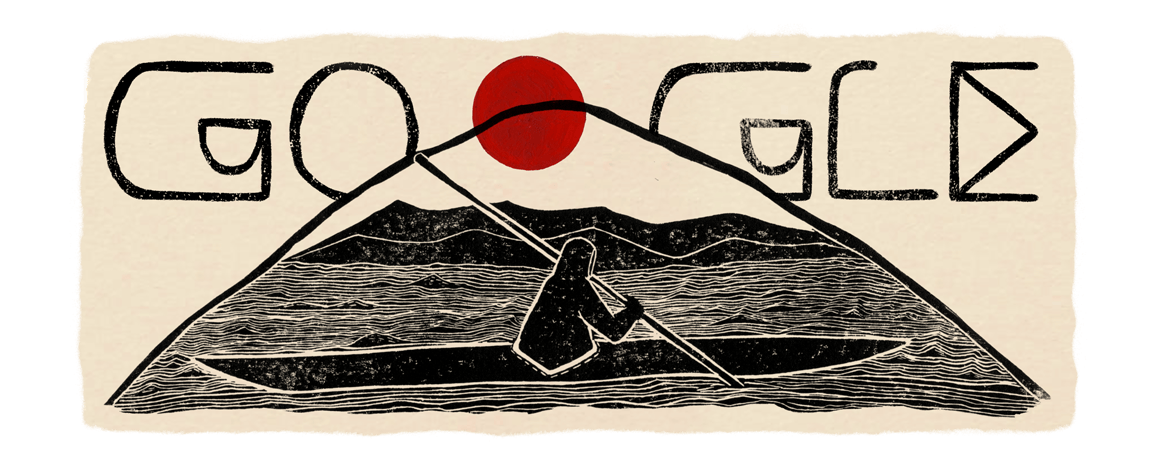
- Details
- By Native News Online Staff
In recognition of Native American Heritage Month, which is celebrated during the month of November, Google today used as its daily theme a kayak on its homepage.
This Native American History Month Doodle, created by Inuit Nunangat artist Natashia Allakariallak, honors the kayak—a remarkable watercraft with a history that spans thousands of years. Originally designed for hunting, fishing, and transportation, the kayak has evolved into a popular recreational activity and competitive sport enjoyed worldwide today.
Indigenous people from the Arctic communities, including the Inuit, Aleut, Inupiat, and Yup’ik peoples, used the kayak for hunting purposes. The word kayak itself is rooted in the Inuit language, where "qajaq" means "hunter’s boat."
These early kayaks were meticulously crafted from animal skins, bones, and driftwood to navigate cold and often perilous waters. The boats were crucial tools for hunters, offering stealth and agility to capture fish, seals, whales, and other prey in even the most challenging conditions.
The kayak term originates from one of the 14 dialects in the Inuit-Yupik-Unangan language family. Kayaks were custom-built by hunters, each one tailored to their specific size, weight, and needs—considered not just tools, but an extension of the person using them.
Today, kayaking has become a global sport, from tranquil lake excursions to thrilling whitewater challenges. Yet, we owe its existence and widespread enjoyment to the ingenuity of the Northern tribes, whose ancestral designs continue to inspire this beloved activity.
More Stories Like This
Native News Weekly (August 25, 2024): D.C. BriefsUS Presidents in Their Own Words Concerning American Indians
Merry Christmas 2025
Navajo Man Faces Vehicular Homicide Charge After Child Killed at Navajo Nation Christmas Parade
Next on Native Bidaské: Lumbee Tribal Chairman John Lowery
Help us defend tribal sovereignty.
At Native News Online, our mission is rooted in telling the stories that strengthen sovereignty and uplift Indigenous voices — not just at year’s end, but every single day.
Because of your generosity last year, we were able to keep our reporters on the ground in tribal communities, at national gatherings and in the halls of Congress — covering the issues that matter most to Indian Country: sovereignty, culture, education, health and economic opportunity.
That support sustained us through a tough year in 2025. Now, as we look to the year ahead, we need your help right now to ensure warrior journalism remains strong — reporting that defends tribal sovereignty, amplifies Native truth, and holds power accountable.
 The stakes couldn't be higher. Your support keeps Native voices heard, Native stories told and Native sovereignty defended.
The stakes couldn't be higher. Your support keeps Native voices heard, Native stories told and Native sovereignty defended.
Stand with Warrior Journalism today.
Levi Rickert (Potawatomi), Editor & Publisher


